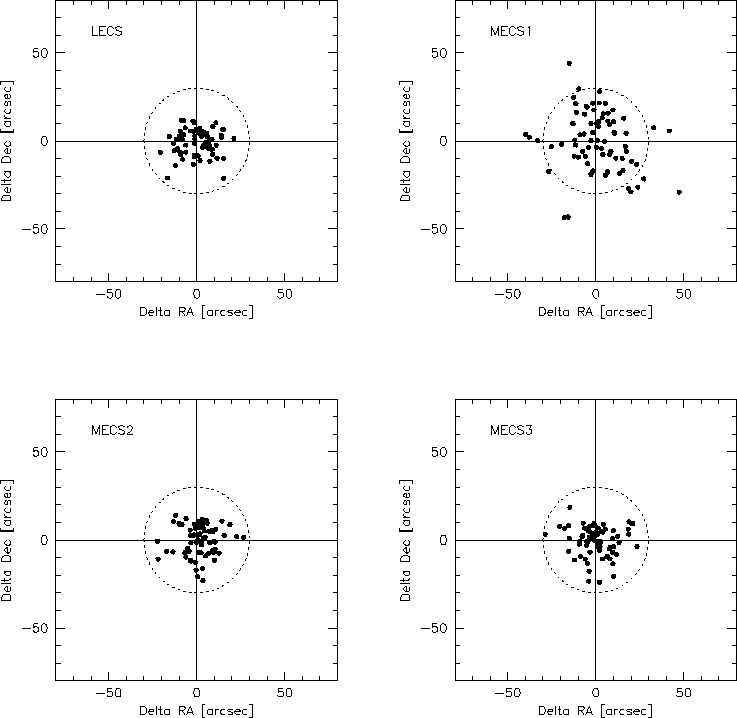 |
The deviations in RA and Dec between the corrected LECS and MECS positions and the optical positions have then been computed and plotted in Figure 4.
We have also studied the coadded MECS1+MECS2+MECS3 ("MECS") and MECS2+MECS3 ("MECS23") images. The corresponding RA and Dec deviations from optical positions (before and after the coordinate correction) are shown in Figure 5.
From the new radial deviations between corrected NFI X-ray positions
and optical ones we obtain the 68% and 90% error radius values reported
in Table 2:
| Instrument | 68% error radius | 90% error radius |
| LECS | 12'' | 16'' |
| MECS1 | 23'' | 38'' |
| MECS2 | 12'' | 18'' |
| MECS3 | 13'' | 22'' |
|
|
|
|
|
|
|
|
As can be seen, after correction the accuracy of LECS and MECS positions has improved by a factor of 2.
Note that the non uniform distribution of RA and Dec deviations before the correction (see Figure 1) is no longer present.
As already mentioned in Section 3, the larger MECS1 position uncertainties
are due to the worse spacecraft attitude data of all BeppoSAX observations
performed in the first two years of the mission (May 1996-May 1998).
 |